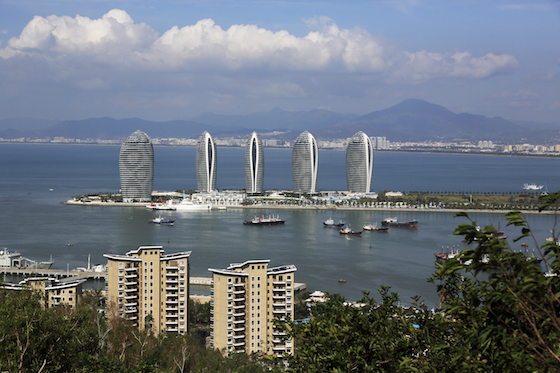Asia Pacific will account for 60% of the projected US$2.1 trillion in credit losses in 2020 and 2021, according to S&P Global Ratings. What does that mean for the hotel market in a region that saw plenty of activity in 2019?
Contributed by Mary Scoviak
Last year was especially busy in Japan, which JLL reported was the most active M&A market in the region. Together with runner-up China, the two countries accounted for 52% of deals by value in 2019.
This year won’t be a banner year, of course, but it’s also not a write-off. Let’s not forget that 2018 and 2019 were record profit years for existing investors, and 2020 was looking good. “There is no widespread need to eject this space for the believers,” said Manav Thadani, founder and chairman, Hotelivate, Delhi, India.
Hot spots
Where the hot spots are on the regional map is a matter of opinion. JLL’s recovery guides cited locations dependent on domestic travel, especially stronger markets such as Sanya, China, and Okinawa, Japan, which have not been as heavily hit by COVID-19. JLL anticipated Okinawa to have one of the fastest recovery trajectories among resorts in the region, and that Sanya is expected to lead the way across Greater China.

William Heinecke, chairman and founder, Minor International, Bangkok, put smaller leisure hotels at the top of the list. Robert Hecker, Singapore-based managing director, Pacific Asia, Horwath HTL, sees it differently.
“Hot markets will remain those which are always popular for ease of transacting, such as Japan, Australia, Hong Kong, Singapore. Maybe add Thailand, Maldives and Vietnam,” Hecker said.
Thadani also sees business hotels in gateway cities being attractive to investors now, as always. Heinecke sees a weakening dollar as COVID-19 concerns ease and funds flow into risker currency. He’s betting on that changing investment targets.
“Moratoriums on loans are like snooze buttons… you can go back to a short, sweet sleep but it will ring again eventually,” Thadani said.
Who will step up?
The “who” has as many different answers as the “where.” Hecker sees private equity as a perennial player in the trophy asset market. Beyond that, he’s seeing most activity coming from one of three scenarios: companies with a hospitality portfolio that want or need to exit; one-off deals; and companies used to an opportunistic acquisition strategy pre-COVID that plan to continue.
Other industry insiders say it’s a simple case of investors looking for a bargain.
“At present, private equity funds and special situation funds that understand the cyclicity of hospitality market are preparing their dry powder,” Thadani said. “Some hotel companies that for years have been on the sidelines are also getting excited about favorable valuations. But the challenge is that the present buyer is seeking a distressed deal and the seller believes it makes sense to hold on to their assets and return to the deal table a few months down the line when the market is past its lowest point.”
Heinecke sees most M&A outside of the REIT space as restructuring rather than consolidation. As JLL notes, Asian hospitality REITs have not escaped the impact of coronavirus on the sector, though the extent of the damage varies from country to country.
For example, extensive government support in Japan (40% of GDP) and Singapore (20% of GDP) offers some cushioning. However, according to the JLL research, leverage is a better predictor of how companies will weather this crisis. Of course, REITs with deep-pocketed sponsors will have inherent advantages, as JLL pointed out. Heinecke said that REITs and operating companies that lack that backing will be targets.
Chinese capital will mostly stay within that country’s borders, as it did pre-COVID. Hecker added that banks aren’t overly keen on asset or single-purpose lending.
Deal terms, valuations
Some of the changes to deal terms are natural reactions to the pandemic, such as more focus on negotiating the terms of force majeure clauses. Thadani and Heinecke both see share deals as more popular than cash ones.
“Deals that get done will be focused on tangible cost (rather than revenue) synergy,” Heinecke said.
Thadani added, “These could largely be non-cash deals and may allow mid-sized regional players to grow in size/scale and also keep a better control over cost of acquisition of the customer. The challenge here is the cultural integration of two regional forces.”
Valuation is more challenging than ever before.
“Buyers will no doubt be looking at discounts to replacement cost, or otherwise, discount to 2019 value based on expectations/assumptions of market recovery pace,” Hecker said. In his view, one main question is when sellers will matcher buyers’ lowered expectations.
Thadani said that for hotels with a long enough operating history, it might be a more complex equation.
“A reasonable method would be to use 2017-19 average earnings as the base but apply a higher than usual (around 100-200 basis points) term cap rate and finally subtract the potential operating losses for 2020 and 2021,” Thadani said. According to JLL, the market may be pricing in two years of net zero EBITDA and a 10% to 15% decrease in terminal asset value due to cap rate expansion (looking at the market from the REIT perspective).
As for the overall outlook for M&A in the region, coronavirus, varying levels of government support, domestic versus international demand and underscore that the future of this region will be told in multiple chapters. For example, recovery timelines range from starting in six months to 18 to 24 months.
